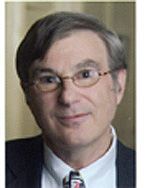Sacred Trash: The Lost and Found World of the Cairo Geniza by Adina Hoffman and Peter Cole; ISBN 978-0-8052-4258-4 ©2012, $26.95, p. 384, including notes
Reviewed by Fred Reiss, Ed.D.

WINCHESTER, California — The word geniza, from the Hebrew root gimmel, nun, zion, means a hidden treasure, an appropriate name for a millennium’s worth of Aramaic and Hebrew documents discarded in an attic room coated in dust and filled with rodent droppings in the ancient Ben Ezra Synagogue, located in Fustat (old Cairo), Egypt.
More than 200,000 manuscript fragments from that site, mostly written between the late ninth and late nineteenth centuries, are now scattered in libraries in England and America, mostly in Cambridge, England and at the Jewish Theological Seminary in New York. Neither Simon van Gelderen, the first westerner to record seeing the geniza, in the mid-eighteenth century, nor Joseph Saphir who saw it a hundred years later, truly understood the importance of the geniza’s contents: vital social and economic records confirming that the Jews were deeply involved with their communities—working side-by-side with their Muslim and Christian neighbors, copies of lost books from antiquity, and the original work of more than three hundred “significant” Jews of their period, including Maimonides, Saadia Gaon, fragments of the Bible and Qur’an, and correspondence from Jewish communities as far away as India.
The first third of Sacred Trash, by co-authors Adina Hoffman and Peter Cole, relates the intriguing tale of Solomon Schechter, his immediate identification of a Hebrew portion from the second century BCE’s Book of Ecclesiasticus by ben Sira, which peripatetic sisters Agnes Lewis and Margaret Gibson obtained from the old Cairo synagogue, and his subsequent odyssey to rescue the hordes of scrolls from the geniza.
The subsequent chapters provide glimpses of the discoveries made by little-known scholars, both Jewish and non-Jewish, who worked on and are still working on the ancient fragments. To cite a few: Francis Burkitt discovered the historically important late-fifth or early-sixth-century copy of a second-century Greek translation of the Book of Kings by Aquila, a convert to Judaism who married into Emperor Hadrian’s family. Israel Davidson identified some pages containing Judeo-Arabic instructions regarding prayer services. These inauspicious sheets led to the discovery of the piyyutim (Hebrew prayer poems) of the legendary, but historically illusive, sixth-century poet Yannai.
Scholars found numerous documents relating to the great Karaite schism, a sect of Judaism, which began in Babylonia and reached Egypt in the latter half of the ninth century. The Cairo geniza ranks in importance with the Dead Sea Scrolls, as it fills in much missing information about the social, economic, cultural, and religious life of the Jews after the fall of the Roman Empire.
Sacred Trash is filled with sagas and stories that marvelously illuminate the ordeals and thrills of those lucky enough to be associated with its find.
*
Dr. Fred Reiss is a retired public and Hebrew school teacher and administrator. He is the author of The Standard Guide to the Jewish and Civil Calendars; Ancient Secrets of Creation: Sepher Yetzira, the Book that Started Kabbalah, Revealed; and Reclaiming the Messiah. The author can be contacted at fred.reiss@sdjewishworld.com